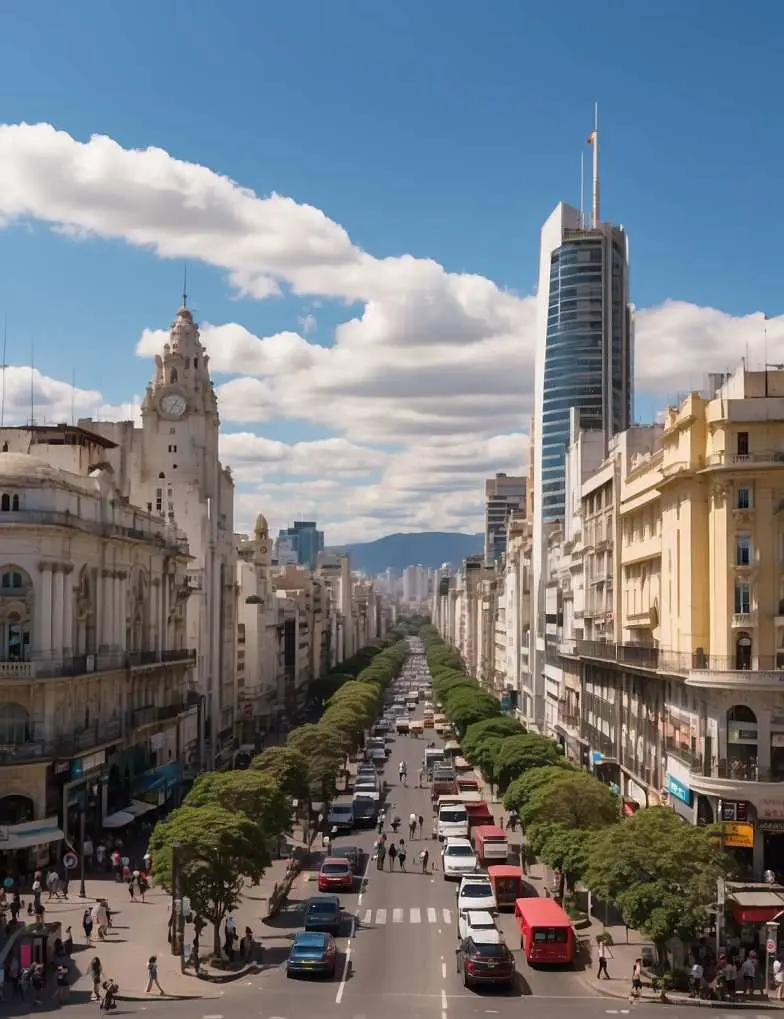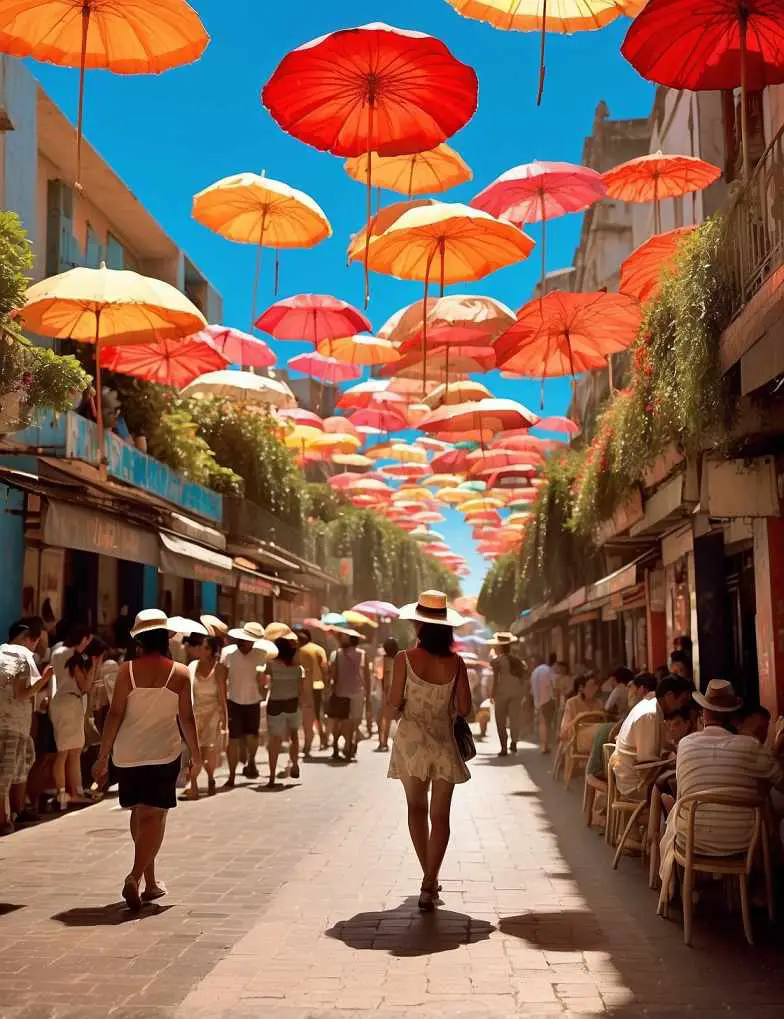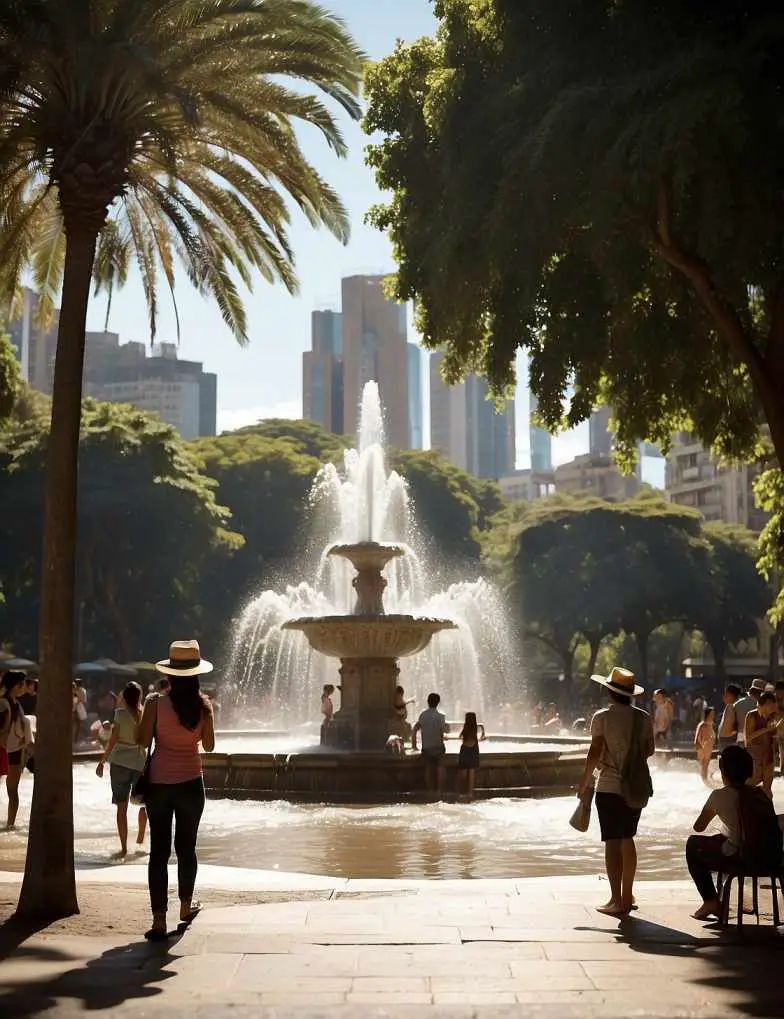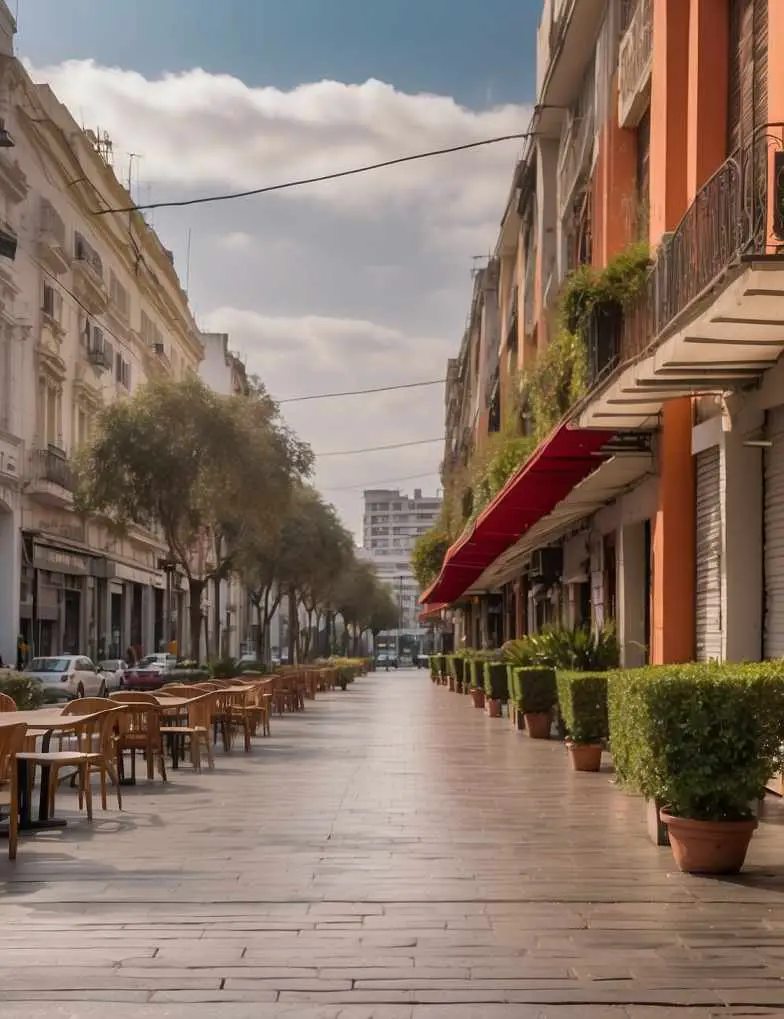Exploring the dynamic city of Buenos Aires, with its enchanting tango, vibrant street life, and rich cultural tapestry, is a dream for many travelers. However, every destination has its less than ideal times for a visit, and Argentina’s spirited capital is no exception.

In this article, we dive into the “Worst Time to Visit Buenos Aires”, shedding light on those periods when the city’s charm might be overshadowed by weather extremes, crowded events, or other factors. Understanding these nuances is key to planning a trip that aligns with your expectations and travel preferences. Join us as we navigate through the seasons and festivities to pinpoint those times when Buenos Aires may not be at its most welcoming.
January & February: The Sizzling Summers in Buenos Aires

Buenos Aires, a city renowned for its lively culture and stunning architecture, presents a different face during the peak of the Argentinian summer in January and February. These months are characterized by intense heat and a bustling atmosphere that might not suit every traveler. Let’s explore why these months are considered less ideal for visiting this vibrant city.
Intense Heat and Humidity
Soaring Temperatures: During January and February, the temperatures in Buenos Aires frequently climb above 30°C (86°F). The city’s location on the Rio de la Plata estuary contributes to the high humidity levels, making the heat feel even more oppressive. This combination of heat and humidity can be particularly challenging for those not accustomed to such conditions.
Impact on Daily Activities: The scorching heat significantly affects how one experiences the city. Long walks to explore the architectural marvels of neighborhoods like Palermo and Recoleta or leisurely strolls through the colorful streets of La Boca become less comfortable. The heat also impacts the enjoyment of Buenos Aires’ famous outdoor cafes and bustling markets.
Altered City Dynamics
Local Exodus: Many porteños (Buenos Aires locals) take their vacations during these months, heading to cooler coastal areas. This exodus changes the city’s dynamic, with some local shops and restaurants closing, and a noticeable drop in the usual street life buzz.
Tourist Influx: Conversely, this period sees a spike in international tourists. While this brings a vibrant, cosmopolitan feel to the city, it can also mean crowded tourist hotspots, longer waits at popular restaurants, and higher prices in hotels and shops.
Challenges in Sightseeing and Comfort

Reduced Outdoor Enjoyment: Buenos Aires is famous for its outdoor attractions, including its parks, street fairs, and open-air tango performances. The extreme heat, however, might limit your ability to enjoy these fully. Evenings offer some respite, but temperatures often remain high.
Air Quality and Health Considerations: The heat can exacerbate pollution in the city, affecting air quality. Visitors with respiratory issues or those sensitive to air quality might find this challenging. Staying hydrated and protecting oneself from the sun becomes crucial.
Celebrating Summer in Buenos Aires
Despite the heat, summer in Buenos Aires has its own charm. The city hosts various festivals and events during this period. The Buenos Aires International Festival of Independent Cinema in January and the vibrant Carnival celebrations in February are highlights, offering unique cultural experiences.
July & August: The Chilly Winters in Buenos Aires
When the sultry summers give way to the winters of July and August, Buenos Aires transforms. This period, often overlooked by tourists, presents a quieter, more introspective side of the Argentine capital. Let’s delve deeper into what makes these months the least favorable for some travelers, yet potentially perfect for others.
A Drop in Temperature
Chilly Climate: Unlike the intense heat of the summer, winter in Buenos Aires is characterized by cold, damp conditions. The mercury hovers around 10°C (50°F), a stark contrast to the city’s usually balmy weather. This drop in temperature brings with it a very different experience of the city.

Indoor Emphasis: The cold weather shifts the city’s vibrant life indoors. While Buenos Aires is famous for its alfresco dining and lively street culture, these activities become less appealing in the winter chill. Visitors during this time should be prepared for more indoor activities, such as exploring museums, enjoying coffee in cozy cafes, or attending tango shows in historic theaters.
Slower Pace and Reduced Crowds
Quieter Streets: With fewer tourists and locals tending to stay indoors, the streets of Buenos Aires take on a quieter demeanor. This can be a double-edged sword. On one hand, it allows for a more relaxed exploration of the city without the hustle and bustle. On the other, it means missing out on some of the energetic street life that defines Buenos Aires.
Cultural Experiences: However, this slower pace does not mean a lack of cultural experiences. Winter is a great time to delve into the city’s rich history and arts scene. The Teatro Colón, one of the world’s best opera houses, continues its performances, and museums like MALBA (Museo de Arte Latinoamericano de Buenos Aires) offer a warm refuge filled with artistic wonders.
Winter Festivities and Indoor Attractions
Cultural Festivals: Winter in Buenos Aires is not without its festivities. The city hosts several cultural events, including the Buenos Aires Tango Festival in August, which attracts dancers and musicians from around the globe. This provides a unique opportunity to immerse in the city’s most famous cultural export.
Comfort Foods and Warm Interiors: This season is also perfect for indulging in Argentine comfort foods. Traditional dishes like locro (a hearty stew) and empanadas become even more enjoyable in the cooler weather. The city’s cafes and restaurants offer a warm and inviting atmosphere, ideal for savoring these local flavors.
Practical Considerations
Packing Essentials: If you’re visiting during these months, packing warm clothing is essential. Layers are advisable, as days can be mild but evenings tend to be quite cold.
Reduced Outdoor Activities: While some outdoor attractions may be less enjoyable, winter walks through iconic neighborhoods like San Telmo and Palermo can be delightful, especially when the sun is out. The city’s parks, though less green, have a unique charm under the winter sky.
Related Articles-
Public Holidays: A City in Standstill
Busy and Closed: During public holidays like Independence Day (July 9) and May Revolution Day (May 25), Buenos Aires can either be exceptionally busy or eerily quiet. Many shops and restaurants close, and public transport operates on a reduced schedule, making it inconvenient for tourists.
Easter Week: Religious Observances
Crowds and Closures: Easter week sees a surge in domestic tourism. While it’s a fascinating time to experience the city’s religious traditions, be prepared for crowds and limited availability in accommodations.
Tips for Traveling During Off-Peak Seasons
- Check the Weather: Always check the weather forecast and pack accordingly. Layers are key for the unpredictable transitions of seasons.
- Book in Advance: During public holidays and religious festivals, ensure you book your accommodations and transport well in advance.
- Embrace Indoor Activities: Explore the city’s rich array of museums, historical theaters, and cozy cafes.
- Enjoy the Quiet: The off-peak season can be a blessing in disguise for those seeking a more authentic experience, away from the tourist crowds.
FAQs (Frequently Asked Questions)
1. What is the best month to go to Buenos Aires?
The best time to visit Buenos Aires is during the spring months of September to November, or the fall months of March to May. These periods offer mild temperatures and fewer crowds.
2. What is the coldest month in Buenos Aires?
July is generally the coldest month in Buenos Aires.
3. What is the rainy season in Buenos Aires?
The rainy season in Buenos Aires is generally during the summer months, particularly January and February.
4. When should I go to Buenos Aires?
The ideal times to visit Buenos Aires are during the spring (September to November) and fall (March to May).
5. How many days do you need in Buenos Aires?
A minimum of 3 to 4 days is recommended to explore the main attractions of Buenos Aires.
6. Is October a good time to visit Buenos Aires?
October is a great time to visit Buenos Aires, offering pleasant weather and the start of spring.
7. Is Buenos Aires an expensive place to visit?
Buenos Aires can be moderately expensive, with costs similar to or slightly lower than major U.S. cities.
8. Can you drink the tap water in Buenos Aires?
Tap water in Buenos Aires is generally considered safe to drink, but some travelers prefer bottled water due to its different mineral content.
9. Do you need to speak Spanish to visit Buenos Aires?
Basic Spanish is helpful for navigating Buenos Aires, but many people in tourist areas speak English.
10. Are there beaches in Buenos Aires?
Buenos Aires itself doesn’t have beaches, but there are beach resorts nearby, like Mar del Plata.
Conclusion:
While Buenos Aires is a year-round destination, the extremes of summer and winter, along with major holidays, can present challenges. However, with proper planning and an adventurous spirit, any time can be a good time to explore the unique charm of this South American jewel. Happy travels!
